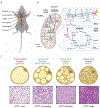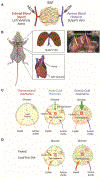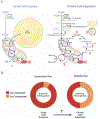A new era of understanding in vivo metabolic flux in thermogenic adipocytes
- PMID: 37703635
- PMCID: PMC10840980
- DOI: 10.1016/j.gde.2023.102112
A new era of understanding in vivo metabolic flux in thermogenic adipocytes
Abstract
Nonshivering thermogenesis by brown adipose tissue (BAT) is an adaptive mechanism for maintaining body temperature in cold environments. BAT is critical in rodents and human infants and has substantial influence on adult human metabolism. Stimulating BAT therapeutically is also being investigated as a strategy against metabolic diseases because of its ability to function as a catabolic sink. Thus, understanding how brown adipocytes and the related brite/beige adipocytes use nutrients to fuel their demanding metabolism has both basic and translational implications. Recent advances in mass spectrometry and isotope tracing are improving the ability to study metabolic flux in vivo. Here, we review how such strategies are advancing our understanding of adipocyte thermogenesis and conclude with key future questions.
Copyright © 2023 Elsevier Ltd. All rights reserved.
Conflict of interest statement
Declaration of Competing Interest The authors declare no conflict of interest.
Figures



References
-
- Gessner C: Conradi Gesneri medici Tigurini Historiae animalium: lib. I de quadrupedibus uiuiparis Zurych: apud Christ. Froschovervm; 1551.
-
- Cannon B, Nedergaard J: Brown adipose tissue: function and physiological significance. Physiol Rev 2004, 84:277–359. - PubMed
-
- Nedergaard J, Bengtsson T, Cannon B: Unexpected evidence for active brown adipose tissue in adult humans. Am J Physiol Endocrinol Metab 2007, 293:E444–452. - PubMed
-
- Saito M, Okamatsu-Ogura Y, Matsushita M, Watanabe K, Yoneshiro T, Nio-Kobayashi J, Iwanaga T, Miyagawa M, Kameya T, Nakada K, et al.: High incidence of metabolically active brown adipose tissue in healthy adult humans: effects of cold exposure and adiposity. Diabetes 2009, 58:1526–1531. - PMC - PubMed

